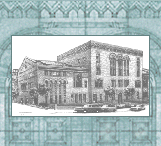

Our
mission is to reduce the number of injuries and deaths due to
injuries,
through prevention, improved trauma care, and improved rehabilitation.
Trauma Foundation
SF General Hospital
Bldg 1 Rm 300
San Francisco, CA 94110
Phone:415/821-8209
Fax: 415/821-8202
email: tf@traumaf.org
June 29, 2004
Fireworks-Related Injuries & Deaths
in the United States
The distinctive sound of fireworks
is part of the celebration of special events and holidays around the world.
In the
United States both Independence Day (4th of July) and the New Year are celebrated with
fireworks. 
Facts on Injuries from Fireworks in the
United States
In the United States in 2002, 8,800 people were treated in emergency departments for
fireworks-related injuries. Four people died from these injuries.
Fifty percent of fireworks injuries occurred among children 14 years and younger.
Seventy-five percent of fireworks injuries occurred among boys as compared to 25%
among girls. More than half of the injuries
(66%) involved burns; the hands and fingers (32%), eyes (21%), and the head
and face (17%) were the parts of the body most frequently injured.1
Most injuries occur with Class C or Consumer Fireworks. The type of firework that seems the most harmless but actually causes the greatest number of injuries is the sparkler. Itís temperature can reach up to 1000 degrees Farenheit.2
Estimated
Fireworks-Related Injuries by Device Type
June 21-July 21, 2002
| Fireworks Device Type | Estimated Injuries | Percent | ||
| Total | 5,700 | 100 | ||
| All Firecrackers | 1,000 | 18 | ||
| Small | 400 | 7 | ||
| Illegal | 200 | 4 | ||
| Unspecified | 400 | 7 | ||
| All Rockets | 800 | 15 | ||
| Bottle Rockets | 700 | 12 | ||
| Other Rockets | 100 | 2 | ||
| All Selected Other Devices | 2,600 | 46 | ||
| Sparklers | 1,500 | 26 | ||
| Fountains | 300 | 6 | ||
| Novelties | 200 | 4 | ||
| Re-loadables | 200 | 4 | ||
| Roman Candles | 300 | 6 | ||
| Homemade/Altered | 100 | 2 | ||
| Public Display | 100 | 1 | ||
| Unspecified | 1,000 | 18 | ||
Source: NEISS, U.S. Consumer Product Safety Commission/EPHA. 2002 Fireworks Annual Report: Fireworks-Related Deaths, Emergency Department Treated Injuries, and Enforcement Activities During 2002. Based on 169 reported emergency department visits between June 21, 2002 and July 1, 2002. Subtotals include categories listed directly below them. Totals may not add due to rounding. Estimates rounded to nearest 100 injuries.
The Cost of fireworks-related
injury
The estimated annual cost of
fireworks-related injuries is $100 million.3
Fireworks-related fires have caused at least $15 to $20 million in property loss each year in the past decade. 4
What prevention strategies should
be enacted?
There are both Federal and state
laws to prohibit the public's access to fireworks. Federal law
classifies them as hazardous substances. Under
the Federal Hazardous Substance Act, Federal law has banned some large very dangerous
fireworks, including re-loadable shells, cherry bombs, and
large firecrackers that contain 2 grains of powder. The Bureau
of Customs and Border Protection tries to see that illegal fireworks are not shipped over the
border but enforcement is difficult. In 2002, the Bureau of Customs and
Border Patrol along with the Consumer Product Safety Commission, tested 375 fireworks
shipments and found that 30%
were out of compliance.5
Seven states (AZ, DE, GA, MA, NJ, NY, and
RI) have banned the sale of fireworks and the number of
fireworks-related injuries seen by emergency departments in these states has declined.
See United States showing type of state laws:
Map
See United State Laws by State: State Laws
See the NFPA's
Model Fireworks Law.
Fireworks can turn a happy celebration into a potentially traumatic experience for both children and adults. The Consumer Product Safety Commission recommends that fireworks be ignited only by professionals.
The Trauma Foundation believes that state laws banning the sale of fireworks are sensible; they work. Such laws can reduce the health costs related to these injuries and, more importantly, help prevent needless injuries and deaths .
References & Resources
1.
National Center for
Injury Prevention and Control, CDC. Spotlight on Injuries from
Fireworks. http://www.cdc.gov./ncipc/duip/spotlite/firework_spot.htm
2. MMWR
weekly 1992. 41:451-4
3. Marion County, IN, 1986-1991.MMWR weekly 6/23/00 49(24):545-6.
(cost estimates are for US)
4. NFPA Online http://www.nfpa.org/Research/nfpafactsheets/fireworks/fireworks.asp
5. 2002 Fireworks Annual Report CPSC. http://www.cpsc.gov/LIBRARY/2002fwreport.pdf.
p 17.
Resources:
- National Center for Injury Prevention and Control
- UK Firework Safety
- Classification of Fireworks in the US
- National Council on Firework Safety
- Consumer Product Safety Commission - Fireworks
- Fireworks Injury Statistics - UK
- NFPA Fireworks

